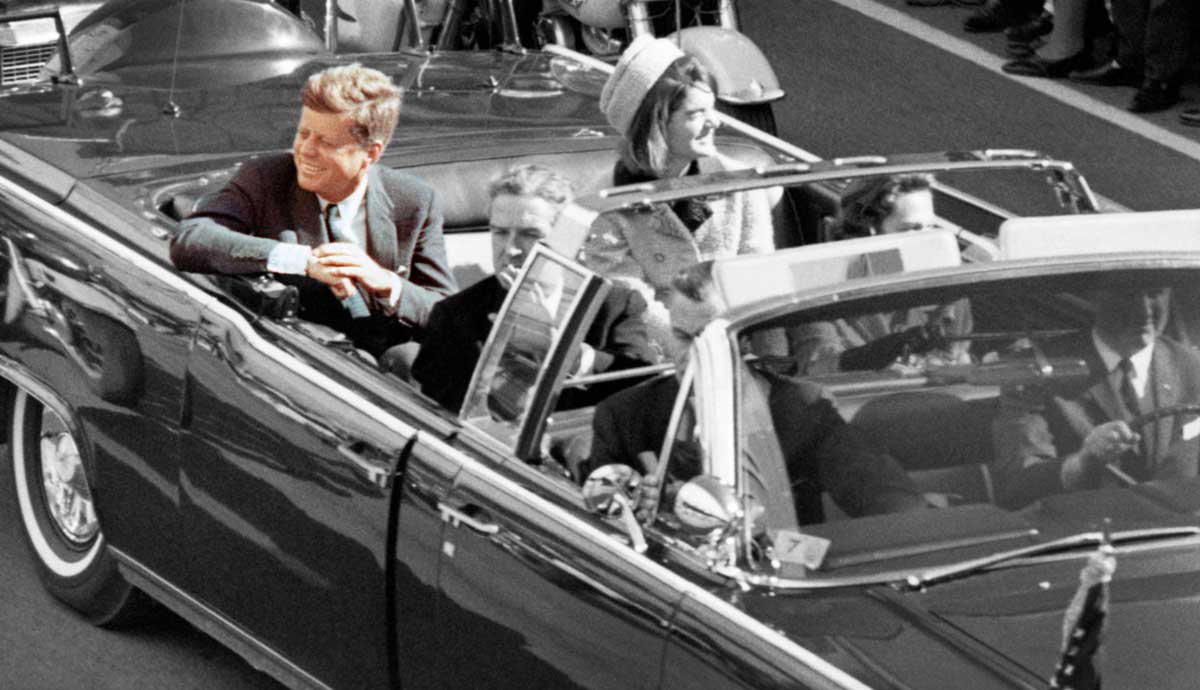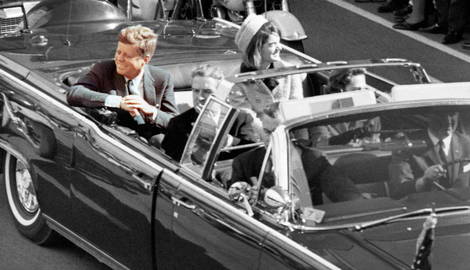
One of the most well-known and polarizing events in US History is the assassination of President John F. Kennedy in Dallas, Texas, on November 22, 1963. Those alive can tell you exactly where they were when they heard the news and how the entire country wept with the Kennedys in the days that followed. So much has been researched and written about the assassination itself, from the manhunt for Lee Harvey Oswald to his murder by Jack Ruby, the funeral procession, John Jr’s salute, and even the seemingly unending conspiracy theories still alive today. Yet one part of that fateful day seemed to have been forgotten in the chaos: the Presidential Limo that was transporting President and Mrs. Kennedy as well as Governor and Mrs. Connally. What happened to that customized Lincoln limousine?
The Kennedy Presidential Limo

First, let’s visit some amazingly strange facts about this and other presidential vehicles. The Lincoln limo was assembled at the Ford Motor Company’s Lincoln Plant in Wixom, Michigan in January 1961. It was then sent to Hess and Eisenhardt in Cincinnati, Ohio, for customization. The car was cut in half–literally–to add reinforcements to the body, which extended the length another 3.5 feet. It was delivered to the White House in June 1961. One of the most interesting facts about this vehicle is that it remained the property of the Ford Motor Company and was leased by the Secret Service for use for just $500 per year. Its retail value at the time of issuance from the Lincoln plant was $7,347. By the time the customization was complete, the vehicle cost almost $200,000.
Custom Limo for the President

Customization wasn’t just replacing the interior or adding additional space and seating. It went way beyond the basics of what we know as a limousine. This limo had t-tops! Not in the general sense of sports car t-tops, but it had removable steel and transparent plastic roof panels that were referred to as a bubble top. It had a hydraulic rear seat that could be raised almost 12 inches to elevate the president. Retractable steps were added on for the convenience of the secret service agents tasked with walking next to the vehicle, as well as grab handles and two steps on the back bumper for additional agents. It also provided auxiliary jump seats for additional passengers, two radio telephones, and of course, hand embroidered Presidential Seals in each of the door pockets.
Kennedy in Dallas: November 22, 1963

But the custom midnight blue “X-100,” as the Secret Service referred to the President’s limousine, was one of two modified limos used for official trips during the Kennedy Administration. That meant that any official trips he took required the limo(s) to be transported for the event as well. The trip to Texas was not only a chance for him to campaign with the First Lady by his side but also an opportunity for him to ease some political tensions that were growing among the democrats in the state. The Secret Service had the vehicle transported to Dallas, where it was waiting for the President and Mrs. Kennedy’s arrival at Love Field.
What happened next is a timeline that has been dissected, discussed, reviewed, and pored over for decades. Piecing together the personal experiences of the people that were present, it paints a picture of pain and anguish. Kennedy’s limo, carrying President and Mrs. Kennedy, Texas Governor John Connally and his wife, as well as agents jogging alongside the secret service follow-up vehicle code-named “Halfback,” headed for the scheduled lunch at the Trade Mart in Dallas, taking a winding path through the streets of downtown Dallas. The crowds were thick in the city, creating a narrower road space for the limos to navigate corners. People were everywhere, on the streets, balconies, rooftops, and even hanging out of windows. As the motorcade reached the end of Main Street, it turned right onto Houston Street and was nearing the end of the trip through the City of Dallas.
Assassination Shots in Dealey Plaza

At the end of Houston Street, where it intersects with Elm, is a park known as Dealey Plaza and a big red brick building with the words “Texas School Book Depository” on the side. Turning from Houston Street onto Elm Street is a very sharp turn, which caused the vehicles to slow down significantly. This was when the shots rang out that wounded President Kennedy and Governor Connally. The limo driver, Secret Service Agent Bill Greer, leaped into action, speeding up and racing down the nearby freeway to Parkland Hospital. By now, the secret service agents knew that the President’s wound was fatal but had begun to realize Governor Connally was also wounded.
As they made every attempt to get the President and Governor into the hospital, the devastation within the presidential limo became quite apparent. Upon evacuation at the hospital, the car was guarded by Dallas Police (as all the available secret service agents were assisting the limo occupants). The bubble top was placed on the vehicle too, in order to avoid gawkers and photographers, as well as to preserve evidence.
That evening, the Air Force One cargo plane carrying the President’s limo and follow-up car landed and was met by Secret Service agents and police. The vehicles were driven directly to the White House garage, where an all-night watch commenced. Members from the Bethesda Naval Hospital would eventually come to collect scalp, brain tissue, and bone matter from the vehicle.
Evolution of the Presidential Limo

Once the investigation was completed, the car underwent a complete revamp, code-named “Project D-2,” starting in December 1963. A committee of six individuals representing the Secret Service, customization company Hess and Eisenhardt, Pittsburgh Plate Glass Company, and the Army Materials Research Center set about to modify and retool the vehicle for use. Six months later, the work was completed, and testing took place in Ohio and Michigan before returning the vehicle to the White House.
Some of the changes made were the addition of a permanent, non-removable top to accommodate transparent armor, complete re-armoring of the rear passenger cabin, reinforcement of mechanical and structural components to accommodate the additional weight of the vehicle, run-flat tires, as well as a complete re-trimming of the rear compartment that was damaged during the assassination. It was repainted “regal Presidential Blue Metallic” with silver metallic flakes but later painted black at the request of President Johnson.
Understandably, when Lyndon B. Johnson became president due to the assassination, he wanted nothing to do with the vehicle. He had been present during the trip to Texas and really didn’t wish to use the former president’s limo—revamped or not. While the limo was placed back in service approximately six months after the Kennedy assassination, Johnson is believed to have used the second modified limo whenever possible. There was once a specific change made to the car at the insistence of President Johnson. He requested the rear window be able to go up and down. This change was made, although it did not make the vehicle any safer.
After Johnson, Richard Nixon used the car and requested additional modifications, creating a hatch in the roof where he could stand and wave to the crowd as he traveled. The final president to use the vehicle was Jimmy Carter, and it was officially retired in 1977.
The Retirement of the Kennedy Limo

But what exactly did retirement look like for the 10,000-pound, $500,000 mammoth? It was returned to Ford Motor Company, and the lease was terminated. The car was placed in the Henry Ford Museum with approximately 100 other important vehicles. Its condition has been preserved the way it left the White House in 1974. It is still on display almost 50 years later at the Museum located in Dearborn, Michigan. The museum is a tribute to all things American, with various exhibits showcasing the cultural significance of the car as well as its innovative thinkers that helped to shape America.
With all the technological advancements we have at our disposal today, how is the Presidential motorcade different now? The most glaring issue the Kennedy limousine fleet faced was a lack of armor. They were not fully bulletproof. Add in the lack of motor power and the capability to completely remove the top, allowing for open-air viewing, and you have a recipe for failure. Security was always at the forefront of the Secret Service initiative when guarding the President, but funding and logistics always seemed to get in the way. After the Kennedy assassination, the focus shifted to a more forward-thinking stance.
The Presidential Limo Today: The Beast

Today’s Presidential limousine is definitively more equipped for the safety of the passengers. While the Secret Service is very tight-lipped about current vehicles in their fleet, there are some things known about the presidential limousine that is now referred to as “The Beast.” The 2009 Cadillac model that President Barack Obama used was fitted with an ornate interior that included a fold-out desk. It also offered secure and encrypted communications and was able to seat five passengers in the rear compartment. Fully armored from top to bottom, front to back, the more recent editions of the presidential limousines are outfitted to protect their passengers safely and securely as well as keep up with evolving technology and security needs.
Some of the more modern upgrades to the vehicle include night vision and infrared driving systems, a sealed cabin capable of independent air supply (in the case of a nuclear-biological-chemical attack), and a supply of the president’s blood type. But for all the positive advancements, there are a few detractors as well. Like Kennedy’s limo, it’s large, not great at maneuvering city streets, and extremely heavy. It doesn’t have a high ground clearance either. For this reason, the Secret Service has added a fleet of heavily armored Chevrolet Suburbans to use when traveling overseas. Regardless, the Kennedy limousine will forever hold a place in American history as a reminder of that dark day in November when President Kennedy was assassinated.
Further Reading
- Blaine, G., & McCubbin, L. (2011). The Kennedy Detail: JFK’s Secret Service Agents break their silence. Gallery Books.
- A chronicle of carriages. A Chronicle of Carriages | United States Secret Service. (n.d.), from https://www.secretservice.gov/about/history/transportation
- Hill, C., & McCubbin, L. (2013). Five days in November. Gallery Books.
- Lorio, J. (2020, September 25). Two Lincolns last used by President John F. Kennedy will be auctioned. Autoblog, from https://www.autoblog.com/2020/09/25/jfk-presidential-limos-auction/
- President Kennedy Limousine research. The Henry Ford. (n.d.), from https://www.thehenryford.org/collections-and-research/digital-resources/popular-topics/kennedy-limo/











